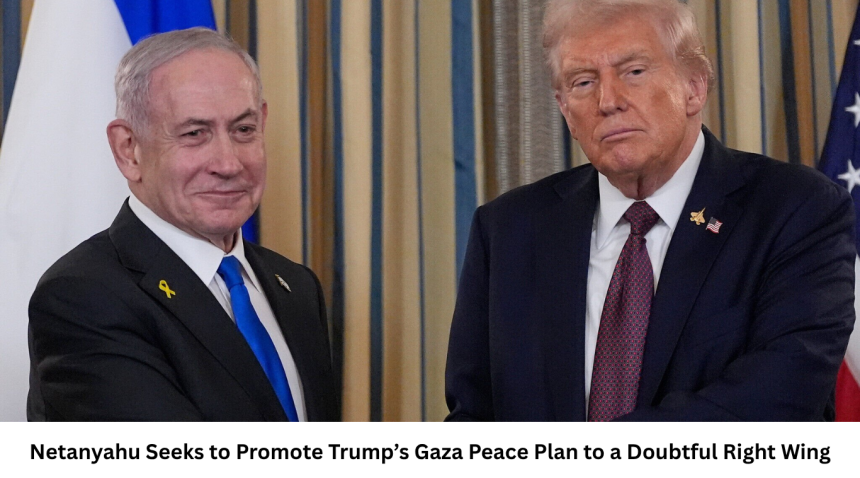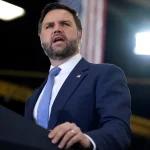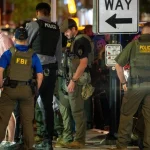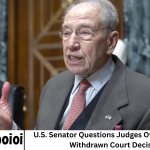Israeli Prime Minister Benjamin Netanyahu is once again in a complex political position, trying to navigate internal divisions while responding to international proposals. The latest challenge comes in the form of former U.S. President Donald Trump’s proposed Gaza peace plan. While the plan aims to create a pathway for peace and stability in the region, Netanyahu faces a strong backlash from Israel’s right-wing factions, many of whom view the proposal as a threat to Israeli sovereignty and security.
- Background: The Long History of Peace Efforts in the Region
- What Is Trump’s Gaza Peace Plan?
- Netanyahu’s Challenge: Convincing the Right Wing
- Reactions from Israeli Right-Wing Leaders
- The Palestinian Response to the Plan
- International Reactions and Regional Dynamics
- Economic Aspects of the Plan
- Netanyahu’s Political Strategy
- The Role of the United States
- Security Concerns in Gaza
- Potential Impact on Israel’s Economy
- Public Opinion in Israel
- The Path Forward
- Frequently Asked Questions
- Conclusion
This article explains what Trump’s Gaza peace plan involves, why Netanyahu is trying to promote it, and why so many on the Israeli right remain skeptical. It also explores the potential political, social, and security impacts of the plan, both for Israel and for the broader Middle East.
Background: The Long History of Peace Efforts in the Region
The Israeli-Palestinian conflict has been one of the world’s most difficult and long-standing disputes. Since Israel’s founding in 1948, the region has seen numerous wars, peace talks, and failed agreements. Both sides claim historical, cultural, and religious ties to the land, particularly Gaza and the West Bank.
Over the decades, the United States has played a key role in trying to mediate peace between Israel and the Palestinians. From the Camp David Accords in the 1970s to the Oslo Accords in the 1990s, each effort has faced major challenges. Trump’s Gaza peace plan is the latest attempt, with a focus on economic development and political compromise.
What Is Trump’s Gaza Peace Plan?
Trump’s Gaza peace plan, proposed during his presidency and revived in discussions afterward, aims to stabilize Gaza by combining economic incentives with political restructuring. The idea is to encourage investment in Gaza’s economy, rebuild infrastructure, and create a sustainable governance structure that reduces conflict between Israel and Palestinian groups such as Hamas.
The plan also includes proposals to increase international funding for Gaza, support job creation, and improve living conditions for Palestinians. At the same time, it calls for stronger security measures for Israel, ensuring that any reduction in hostilities does not threaten Israeli civilians or territory.
However, the plan also contains controversial elements. Some proposals suggest the potential for limited Palestinian self-rule in parts of Gaza while maintaining Israeli oversight of border security and military presence. This balance between autonomy and control has triggered opposition from both Palestinians and many Israelis.
Netanyahu’s Challenge: Convincing the Right Wing
Prime Minister Netanyahu’s efforts to promote the plan come at a politically sensitive time. His coalition relies heavily on right-wing and religious parties that strongly oppose any concessions to the Palestinians. For them, Trump’s plan looks too much like a compromise, which they believe could weaken Israel’s control over key areas and jeopardize national security.
Netanyahu, on the other hand, sees an opportunity. He hopes the plan could bring stability to the region, improve relations with the United States, and strengthen Israel’s international standing. He also understands that rejecting the plan entirely could isolate Israel diplomatically and make future negotiations harder.
Still, convincing his political base is proving difficult. Many right-wing leaders accuse Netanyahu of giving in to international pressure. Some even warn that accepting any version of the plan could lead to the creation of a Palestinian state — something they view as unacceptable.
Reactions from Israeli Right-Wing Leaders
Several right-wing politicians have openly criticized Netanyahu’s support for discussions around Trump’s plan. They argue that any peace process involving territorial compromise threatens Israel’s long-term security. Others worry that opening talks with Palestinian representatives could encourage further violence or international interference.
Some of Netanyahu’s allies have called for amendments to the plan, particularly regarding Gaza’s political future. They want Israel to retain full control of security operations, border crossings, and trade routes. Others insist that economic aid to Gaza should only be allowed if Hamas completely disarms — a demand that remains unrealistic in the short term.
This internal divide puts Netanyahu in a delicate position. On one side, he faces pressure from Washington and other Western capitals to engage with the plan. On the other, his domestic base views any form of negotiation with suspicion.
The Palestinian Response to the Plan
Palestinian officials have largely rejected Trump’s Gaza peace plan. They see it as biased toward Israel and as an attempt to control Palestinian territories under the guise of development. Leaders from both the Palestinian Authority and Hamas argue that true peace cannot come without full political recognition and independence.
In Gaza, the reaction has been mixed among the population. Some civilians welcome the idea of improved living conditions and new economic opportunities. However, many remain skeptical about whether such promises will actually materialize, given past experiences of unfulfilled international pledges.
International Reactions and Regional Dynamics
Outside of Israel and Palestine, reactions to Trump’s Gaza peace plan have been divided. Some Arab countries, particularly those that recently normalized relations with Israel under the Abraham Accords, have expressed cautious optimism. They hope that stability in Gaza could reduce regional tensions and open the door to further cooperation.
Other nations, especially Iran and its allies, see the plan as an attempt by the U.S. and Israel to reshape the region for their own interests. European governments have also been cautious, calling for a more balanced approach that includes Palestinian representation in all discussions.
The broader international community remains focused on whether the plan could lead to real change or if it will simply join the long list of failed peace efforts.
Economic Aspects of the Plan
A major feature of Trump’s proposal is its economic dimension. The plan envisions billions of dollars in investment aimed at rebuilding Gaza’s infrastructure, including water systems, electricity networks, hospitals, and schools. It also seeks to create jobs through international partnerships and local development projects.
Supporters of the plan believe that improving Gaza’s economy could reduce extremism and violence by giving residents a sense of hope and stability. They argue that poverty and unemployment have long fueled anger and radicalization.
Critics, however, claim that the plan focuses too heavily on economics while ignoring political realities. They argue that no amount of money can resolve the conflict unless issues like sovereignty, borders, and human rights are addressed.
Netanyahu’s Political Strategy
For Netanyahu, promoting the plan is not only about regional peace — it’s also about political survival. He faces ongoing legal troubles and public criticism over corruption allegations and his handling of domestic issues. Showing progress on the international stage could strengthen his image as a global statesman and distract from challenges at home.
At the same time, Netanyahu is aware that moving too fast on the plan could alienate his conservative base and risk the stability of his coalition government. His approach, therefore, has been cautious. He emphasizes the plan’s benefits for Israel’s security and economy while downplaying elements that could be seen as concessions.
The Role of the United States
The United States continues to play a central role in shaping discussions around the Gaza peace plan. Under Trump’s administration, Washington was seen as strongly pro-Israel, with key decisions such as moving the U.S. embassy to Jerusalem and recognizing Israeli sovereignty over parts of the Golan Heights.
Even after Trump left office, discussions around his plan have continued, largely because of its ambitious economic framework and its potential to involve regional partners. U.S. policymakers view stability in Gaza as essential to reducing future conflicts and maintaining regional alliances.
However, the U.S. also faces criticism for not engaging Palestinian voices adequately during the development of the plan. Many observers argue that a lasting peace cannot be achieved if one side feels excluded from the process.
Security Concerns in Gaza
Security remains the biggest challenge for any peace initiative involving Gaza. The region has seen repeated cycles of violence between Israel and Hamas, including rocket attacks, airstrikes, and blockades. Restoring peace requires addressing both the root causes of conflict and the immediate risks.
Trump’s plan proposes a phased approach to security, with international monitoring and gradual easing of restrictions in exchange for disarmament and cooperation. However, such measures require trust — something that is currently in short supply on both sides.
Netanyahu has insisted that Israel will never compromise on its security. Any agreement, he says, must guarantee the safety of Israeli citizens and prevent future attacks from Gaza.
Potential Impact on Israel’s Economy
Supporters of the plan within Israel argue that regional peace and stability would have economic benefits for the country. Improved relations with neighbors could expand trade, attract investment, and reduce defense costs over time.
However, opponents fear that implementing the plan could lead to new instability, especially if Hamas or other militant groups reject it. They warn that Israel might end up spending more on security and reconstruction efforts if violence resumes.
Public Opinion in Israel
Public opinion in Israel is deeply divided over the plan. Many Israelis, especially in urban and centrist areas, are open to exploring new solutions if they bring peace and economic growth. Others, particularly in right-wing and settler communities, remain firmly opposed to any policy that could lead to territorial concessions.
Netanyahu must balance these competing views while maintaining support from his political base. The challenge lies in presenting the plan as both pragmatic and patriotic — a step toward peace without compromising Israel’s safety or identity.
The Path Forward
As of now, the future of Trump’s Gaza peace plan remains uncertain. Netanyahu’s attempts to promote it face strong resistance from within his government and skepticism from Palestinians. Internationally, support for the plan depends on whether it can deliver real change on the ground.
For any peace initiative to succeed, both sides must feel that their core interests are protected. Without mutual trust and commitment, even the most well-funded plans are likely to fail.
Frequently Asked Questions
What is Trump’s Gaza peace plan?
Trump’s Gaza peace plan is a proposal that combines economic development and political restructuring to stabilize Gaza, encourage investment, and improve relations between Israel and the Palestinians.
Why is Netanyahu promoting the plan?
Netanyahu believes the plan could bring regional stability, strengthen Israel’s international ties, and improve security, though it faces strong opposition from his right-wing base.
Why are right-wing politicians in Israel against the plan?
Many right-wing leaders fear the plan could lead to territorial concessions or a future Palestinian state, which they see as a threat to Israel’s sovereignty and security.
How have Palestinians reacted to the plan?
Palestinian leaders largely reject the plan, calling it biased toward Israel. However, some in Gaza are open to its economic aspects if they lead to real improvements in living conditions.
What role does the United States play in the plan?
The United States designed and supports the plan, viewing it as a path to stability in Gaza and the broader region, though critics say Palestinian voices were excluded from the process.
Could the plan lead to peace?
While the plan offers a framework for economic cooperation and reduced violence, peace will depend on mutual trust, political compromise, and long-term commitment from both sides.
Conclusion
Netanyahu’s effort to promote Trump’s Gaza peace plan to a doubtful right wing highlights the deep divisions within Israeli politics and the complexity of achieving peace in the Middle East. While the plan offers economic and strategic potential, it also faces strong political and ideological resistance.
For Israel, the challenge is to balance security with diplomacy. For Palestinians, it is about ensuring that economic aid does not come at the cost of political rights. For the international community, the goal remains to encourage dialogue, stability, and cooperation.
The road to peace has always been long and difficult. Whether Trump’s plan can make a difference will depend on the willingness of leaders — and their people — to move beyond fear, mistrust, and history toward a shared future.




















